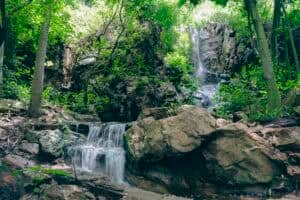The lions were regularly killing sheep in the surrounding area and they were also losing their fear of humans. SANParks was worried that their next prey could be a person.

The SA National Parks (SANParks) defended its decision to euthanise seven lions at the Karoo National Park in the face of outrage over its actions.
Spokesperson Reynold Thakhuli explained that one of the big cats had already figured out how they could get in and out, and which spots along the fence were easiest to dig under, in order to go hunting on the other side.
On Monday, the seven lions made a break for it in the high mountainous areas – twice in 24 hours – killing 10 sheep near the reserve in the Beaufort West area.
Rangers rounded up the lions and slept in the mountain to keep an eye on them. But they escaped again, to go back to the carcasses.
Shot
A decision was made, and the lions were shot dead from a helicopter because it was too dangerous to go on foot. The lions were regularly killing sheep in the surrounding area and they were also losing their fear of humans.
SANParks was worried that their next prey could be a person.
Shooting the lions elicited outrage from some conservationists, who said other steps should have been taken – like fixing the fence.
Thakhuli said the decision was not taken lightly, and SANParks had even tried to donate the lions to other parks and reserves, but nobody had space.
A tough call had to be made
“The crucial aspects, which were considered in making the decision to put down these specific animals are, firstly, this female lion group had left the park before, killing a number of sheep from a neighbouring farm and presenting a threat to human beings,” he explained.
“Secondly, the pride had familiarised themselves with a specific area from which they escaped, and one of the members of the pride had developed a habit of digging underneath fences.”
It was clear there was a high probability of the lions leaving again and posing a risk to livestock and people.
“SANParks is obligated and has a legal duty to respond and mitigate such risks,” he continued.
He explained that lions are opportunistic, prefer easy prey, are fast learners and could become habitual livestock raiders.
Problem lions
According to SANParks’ Large Mammal Ecologists, various drivers contribute to the behaviour of problem lions: one being that male lions disperse when they are adults, and the prides move around and compete for food.
This is not a problem because there is no fencing and other land use between reserves, but the Karoo National Park is bordered by people.
Left unchecked, populations within reserves can increase by 22% a year – and, if the lions do not get enough food, there is a risk they will break out of the reserve.
South Africa is among the top five African range states that conserve lions. There are 3,500 wild lions, and in 59 state and private small reserves, there are 700.
The Karoo National Park has 14 lions left, consisting of three to four groups, with two active satellite collars and VHF monitored collars.
READ NEXT: Wildlife organisations ‘disappointed’ over killing of seven lions that escaped from reserve
For more news your way, download The Citizen’s app for iOS and Android.






